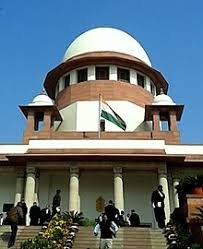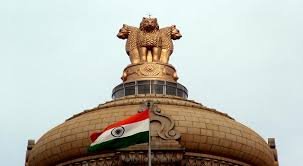The case involved a parcel of land in Mumbai that was historically a water body known as the Shahapur Nallah, used for Ganesh idol immersion for over 100 years. This land was recorded as belonging to the State Government. In 2009, the Mumbai Civic Body (MCGM), acting on a directive to develop “Theme Gardens,” selected this site for transformation. What was previously described as an “abandoned and dilapidated state” and a “garbage dumping ground” was converted into a public recreational amenity. This development, which included planting approximately 400 trees, installing a musical fountain, and other recreational facilities, was completed by 2011. A public-spirited individual, Deepak Patil, filed a writ petition in the High Court towards the end of 2011, seeking the demolition of the constructed garden and the restoration of the “Shahpur Lake”. The High Court allowed the petition, quashed a prior judgment, and directed MCGM to assume possession and restore the water body to its original condition.
Law Involved
The primary legal principle at the heart of the High Court’s determination was the Public Trust Doctrine. This doctrine posits that the State holds certain environmental resources, such as natural water bodies, parks, and forests, in trust for the public’s enjoyment and for future generations. It imposes a legal obligation on government authorities to protect and preserve these resources for public benefit and ecological sustainability. The central question before the court was to achieve a “judicial balance between environmental conservation and development for public welfare”. The judgment highlighted that environmental jurisprudence must “evolve contextually,” taking into account both “ecological imperatives and developmental exigencies”.
Reasoning of the Judgment The Supreme Court’s reasoning, in evaluating the High Court’s decision, focused on three critical factors:
Prior Condition of the Water Body: While acknowledging the historical existence of a water body, the Court noted that affidavits from MCGM officials indicated that by 2009, the Shahapur Nallah had deteriorated into an “abandoned and dilapidated state” and a “garbage dumping ground,” having “completely lost its original character as a water body”. The geographical evidence presented also described it as a “dilapidated, polluted, and encroached water area”.
Current Ecological and Social Value: The transformed area now serves as a significant recreational amenity for the local community. It offers “safe spaces for play and physical activities” for children, provides “dedicated areas for walking and social interaction” for citizens, and includes mature trees that contribute to the local ecosystem. MCGM argued the project enhanced urban recreational infrastructure and that the area now serves the community without charge.
Feasibility and Impact of Restoration: The Court considered the significant negative consequences of demolishing the existing park to restore the water body. Such an action would necessitate the removal of “numerous trees,” leading to “immediate environmental degradation” that would take “decades to remediate”. Furthermore, approximately “Rs. 7 crores of public funds” spent on the project would be rendered “nugatory”. The Court also questioned the long-term sustainability and maintenance of a restored pond, especially given the “absence of any natural catchment area”. This would result in a “paradox wherein environmental restoration results in greater ecological harm than the original transformation,” characterising it as a “classic case of counterproductive remedial intervention”.
Collector’s Sanction: The Court also addressed the Collector’s sanction, which the High Court had deemed “retroactively inefficient” and “contradictory” for attempting to validate an unauthorised act. However, the Supreme Court noted that this sanction, despite its irregularities, ensured the Subject Property remained a public recreational space. The Court found that any “irregularity” or “perceived illegality” in the sanction did not dictate the appropriate remedy at such a late stage, especially since the project was completed years before the writ petition was filed.
Holding:
The Supreme Court found that the High Court’s directive to restore the Subject Property to its original condition would involve “undoing what time and usage have legitimized”. Consequently, the Supreme Court ruled against the demolition of the existing recreational park.
Instead, the Supreme Court issued specific directions to MCGM: To develop alternative water bodies in nearby areas to compensate for the ecological functions of the original water body.
To undertake comprehensive ecological restoration of other deteriorated water bodies within the Municipal jurisdiction within a period of 12 months.
To file a compliance report before the High Court every six months for a period of three years.
The Court emphasised that environmental jurisprudence should aim to balance infrastructural needs with environmental preservation, ensuring sustainable urban development. This order does not preclude the State Government from implementing additional measures to improve environmental quality in the Navi Mumbai area.
Municipal Corporation Of Greater Mumbai And Others V. Pankaj Babulal Kotecha And Others
Supreme Court: 2025 INSC 792: (DoJ 30-05-2025)







